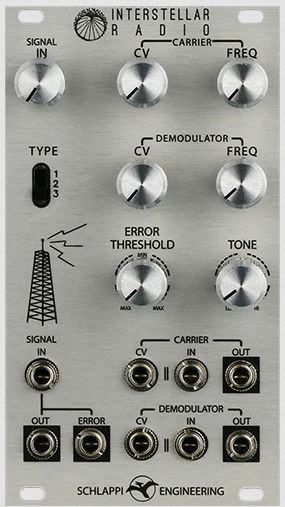I learned something important about the Spectraphon yesterday.
I’d been a bit frustrated with the array creation process. I’d have something that sounded great in SAM mode (live “vocoding”) but in my array, it would sound pretty lifeless and squashed. I was going to write either to Make Noise support or to Tom Erbe about it, but watched Walker Farrell’s video on array creation one more time to see what he said about normalization of spectra.
I noticed he had Focus set pretty low during the array captures he did in the video, and I tend to keep mine higher when I want more accurate reproduction… so I thought, maybe there’s something about that.
That’s not it, but even better, I figured out what it is.

In my example here, the first few pings are from Rings, dry. I chose it because it’s a bit inharmonic, so things are going to happen to the timbre when Spectraphon interprets it
Next we hear Rings through Spectraphon in SAM mode — Partials at max, FM at none, Focus quite low, Slide and Freq adjusted to taste (not for “accuracy”). I captured an array from that, at the default clock rate — no attempt to sync to the tempo that was triggering Rings.
At about 6-9 seconds, we’re hearing SAO mode, with a linear ramp into Slide. It sounds all wrong, very plain, and that’s what was bugging me before.
Then from about 10-13 seconds, we hear SAO mode being clocked instead. That’s much closer to what SAM was doing. The rhythm is a bit weird because of the lack of sync — you can’t set start and end points for the clocking, it goes through the entire capture. But still, encouraging.
The last segment is using a linear ramp with Focus instead of Slide. It’s not quite as good as the clocked option, but far better than Slide, and offers control over the range, rate and direction of movement. It’s possible I could have tweaked these things to fit a bit better, too — this was a quick experiment.
So with some timbres, movement through the array, without the heavy interpolation that Slide does, is critical. But moving through the array the way one might want to can be kind of a challenge.
I still have a list of questions to ask and suggestions, but now with a little less ignorance:
- Issues about addressing the array in SAO. Clocking is limited to forward only and has no start/end settings (I have suggestions for that). Modulating Slide has so much interpolation it ruins the timbre. Modulating Focus doesn’t have enough range to traverse the whole range.
- Some weirdness with clock rate behavior. Sometimes I can slow down the clock and it speeds up advancement through the array, until I slow it down to much slower rates again.
- Regions in SAO where there is crackling noise, as I described in an earlier post.
- Beat frequencies audible sometimes in SAM when Spectraphon’s frequency clashes with the incoming audio; not sure how this is possible since it should be independent
- What is the array file format? Some tools to edit arrays (e.g. trimming to desired length, possibly shifting frequencies or creating new arrays from scratch) on a computer would be fantastic.
- This is completely a side thing, but any recommendations for pitch tracking solutions, especially for bass guitar? I feel like having Spectraphon track the pitch of an instrument it’s resynthesizing has a lot of potential.
Bitwig 5 finally came out of an unusually long beta test. The major new stuff is:
- Places to attach modulators and remote controls that can control project-level settings (like tempo) or group- or track-level settings (mixer settings and every device within the track).
A nice improvement, but not the any-modulator-can-reach-anything I had hoped for. That would have allowed Grid patches, or VCV Rack or CV from modular hardware, to also participate. I’m not sure the actual implementation lets me avoid any of the odd workarounds I’ve occasionally had to employ. - Performance features for the Clip Launcher that I am not paying attention to because I only record audio into the Clip Launcher.
- MSEG modulators (“multiple stage envelope generators”). Not just envelopes though, but drawable shapes for LFOs, oscillators, waveshapers and a “Curves” Grid module. All nearly the same thing from a modular standpoint, just a question of what serves as the index into the lookup and some details about interpolation. It’s a cool feature, much niftier than I imagined in all the preceding years when people complained about the lack of MSEGs in Bitwig. I have rarely found complex envelopes that useful, but once you start to loop them, or use them as transfer functions for other things, the game changes.
- A new browser. This is the thing that lets you choose which plugins, or native devices, or samples or presets or whatever, to add to your project. And this change was the contentious one and likely the main reason the beta took so long.
The old browser was fine, most of us seem to feel. Not glamorous, but not too awkward or complex either. The new one is overly complex in some ways, there are places where it looks like you should be able to do something but you have to do it in some other part of the interface, it doesn’t seem to remember your choices where you expect it to, and just generally causes a lot of friction.
After fighting with it some and reading the manual — which shouldn’t have been necessary — I’ve managed to set it up so it more or less does what I want. It is maybe slightly neater in some ways than the old one. But I would be surprised if all of the hassles are behind me, and I’d happily just go back to the old browser.



